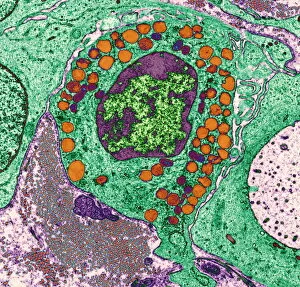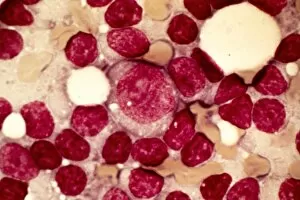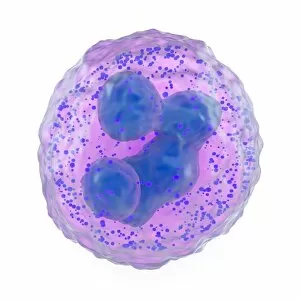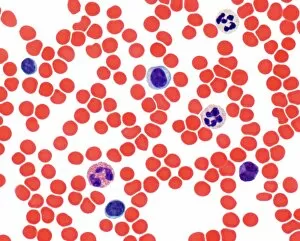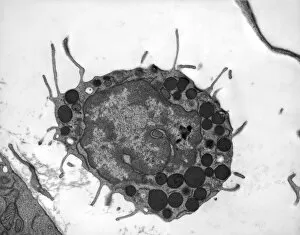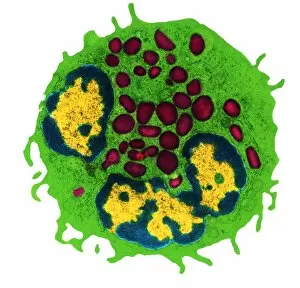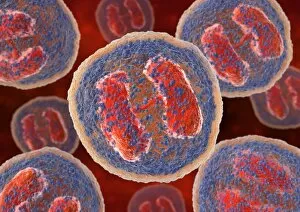Basophil Collection
Basophils, the unsung heroes of our immune system. These remarkable white blood cells play a crucial role in defending our bodies against allergens and parasites
For sale as Licensed Images
Choose your image, Select your licence and Download the media
Basophils, the unsung heroes of our immune system. These remarkable white blood cells play a crucial role in defending our bodies against allergens and parasites. When an allergic reaction occurs, surrounding tissues become inflamed, causing various systemic effects. But fear not, for they are here to save the day. These tiny warriors release histamine, a chemical that triggers inflammation and attracts other immune cells to the site of infection or injury. However, sometimes this response can be excessive and lead to uncomfortable symptoms like itching, redness, and swelling. To counteract these allergic reactions, antihistamines come into play by blocking histamine receptors on target cells. This prevents the cascade of events that cause discomfort and allows us to enjoy life without constantly sneezing or scratching. In this conceptual image of basophils at work, we can see their distinct appearance under a microscope. The artwork showcases their unique features with intricate detail – truly a sight to behold. Additionally, blood smears captured through light microscopy provide further insight into these fascinating cells' behavior. For those who crave more scientific visuals, transmission electron micrographs reveal even finer details about granulocyte white blood cells (which include basophils) as well as mast cells. These images offer glimpses into the inner workings of these essential components of our immune system. Understanding basophil function is particularly important in diseases such as chronic lymphocytic leukemia where abnormalities in white blood cell populations occur. By studying them closely under microscopes like this one shown in the micrograph image provided here F005 / 6090), researchers gain valuable insights into disease mechanisms and potential treatment strategies. So next time you encounter an allergic reaction or marvel at your body's ability to fight off infections – remember the mighty basophil. They may be small but they sure pack a punch when it comes to protecting us from harm.

